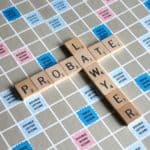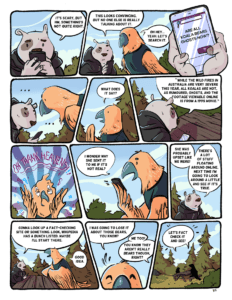Overview
Kriss Kross puzzles are grid based puzzles that require problem-solving methods and logical thinking to solve them. This puzzle begins as an empty grid that you must fill in using the list of vocabulary words provided. Using word patterns and logic you will explore basic coding terminology. You will place the vocabulary words into the grid based on the number of letters and letter placement on the grid itself (i.e. there is only one word that contains three letters therefore it only has one possible option for placement on the grid). This activity promotes the exploration of mathematics, letter recognition, spelling and language arts.
Background Information
As mentioned by BBC, computational thinking can be broken down into four main categories: decomposition, pattern recognition, abstraction, and algorithms.
- Decomposition is a thought process that allows learners to break down a problem such as what words to begin with in a Kriss Kross puzzle.
- Pattern recognition allows learners to connect the given problem to problems they have previously encountered such as using techniques to solve the puzzle from previous techniques learned that allowed them to successfully complete a puzzle.
- Abstraction allows learners to focus on relevant information and problem solving by focusing on their core knowledge surrounding the problem.
- Algorithmic thinking allows learners to develop a solution to a given problem through sequential rules.
For more information on computational thinking, read the following article and lesson provided by BBC Bitesize.
Learners will solve the Kriss Kross puzzle using computational thinking methods or problem-solving methods and logical thinking. Learners will need to develop a thought process that allows them to take steps required to solve their problem or successfully complete the puzzle.
Vocabulary
Algorithm - A list or set of instructions given to a computer to do a task. For example, following a recipe on how to bake a cake.
Branching - Checking conditions by making a decision that depends on what is happening or what has happened. For example, before getting ready to go outside you check the weather.
Bug - Stops a program from running its code properly. For example, if you saw a bug in your soup you would stop eating it until it is safely removed.
Code - The method of giving instructions to a computer to tell it what to do. For example, if you were to tell someone how to brush their teeth you might talk directly to them.
Command - A specific instruction given to a computer to perform a specific task. For example, if you told a dog to sit and they sat down.
Conditionals - If something is true then it will be followed by an action and if it is false then it will be followed by a different action. For example, if it is raining outside you would choose to bring an umbrella but if it is sunny you would take your sunglasses.
Debugging - Finding then fixing a problem in a code, algorithm or program. For example, removing a bug that flew into your soup so you can eat the soup.
Decomposition - Breaking down problems into smaller steps to make it easier. For example, to brush your teeth you will first need a toothbrush and toothpaste. Next, you need a sink with running water. Next, you need to put toothpaste onto your toothbrush. Next you will…
Event - An action code that causes something to happen. For example, when I say GO you will run as fast as you can across the yard.
Loop - An action in a code that causes the code to repeat over and over. For example, instead of telling someone to cut a piece of cake, then cut another piece, then cut another piece, you could say, cut enough cake for three people.
Program - The art of creating an algorithm that a computer can follow to do something. For example, creating step-by-step rules to play a game you created so others can play it.
Sequence - Completing a task in a specific order. For example, when baking a cake you can’t put it in the oven until all the ingredients are added and stirred.
Variable - A temporary piece of information that can change in a code. For example, a variable is something that can change in a game like the score. If you shoot a soccer ball into the next, then you will get a point.
Materials
- Introduction to Coding Vocabulary: Kriss Kross Puzzle
- Pencil
- Optional: If you do not have access to a printer, use grid paper and a pencil to draw out the Kriss Kross Puzzle boxes as shown in the PDF and then use the PDF vocabulary list and definitions to help you solve the puzzle!
Step by Step Instructions
Step 1 → Download and print the Kriss Kross Puzzle (or optional: use a pencil and graph paper as indicated above if no access to a printer).
Step 2 → Look at each word listed and its definition at the bottom. Use easy clues to help you fill words into their spots on the Kriss Kross Puzzle.
| Hint: Did you notice that there is only one word that has 3 letters? That means that there is only one spot on the puzzle it could go. Are there any other words like that? These words will only have one possible spot on the Kriss Kross Puzzle! |
Step 3 → Fill in a word once you know where it goes then don’t forget to cross it off your list of words.
Step 4 → Look for more clues that can help you figure out which word goes where to complete the puzzle.
| Hint: Which words on the Kriss Kross grid have letters that mean only one word could fit? (i.e. there seem to be lots of words that end in ‘e’ but only one word starts with the letter ‘v’). |
Follow Up
Watch for the next activity in our series of Unplugged Coding: Introduction to Coding Activities—Hopscotch! This series is also available on our website.
We want to see the awesome things you’re creating! Share your work with us online by tagging @pinnguaq on Facebook, Twitter or Instagram. Don’t forget to include the hashtag #LearnWithPinnguaq! You can also send us your work by email at media@pinnguaq.com.
For more fun activities, visit Pinnguaq website‘s learn section!




